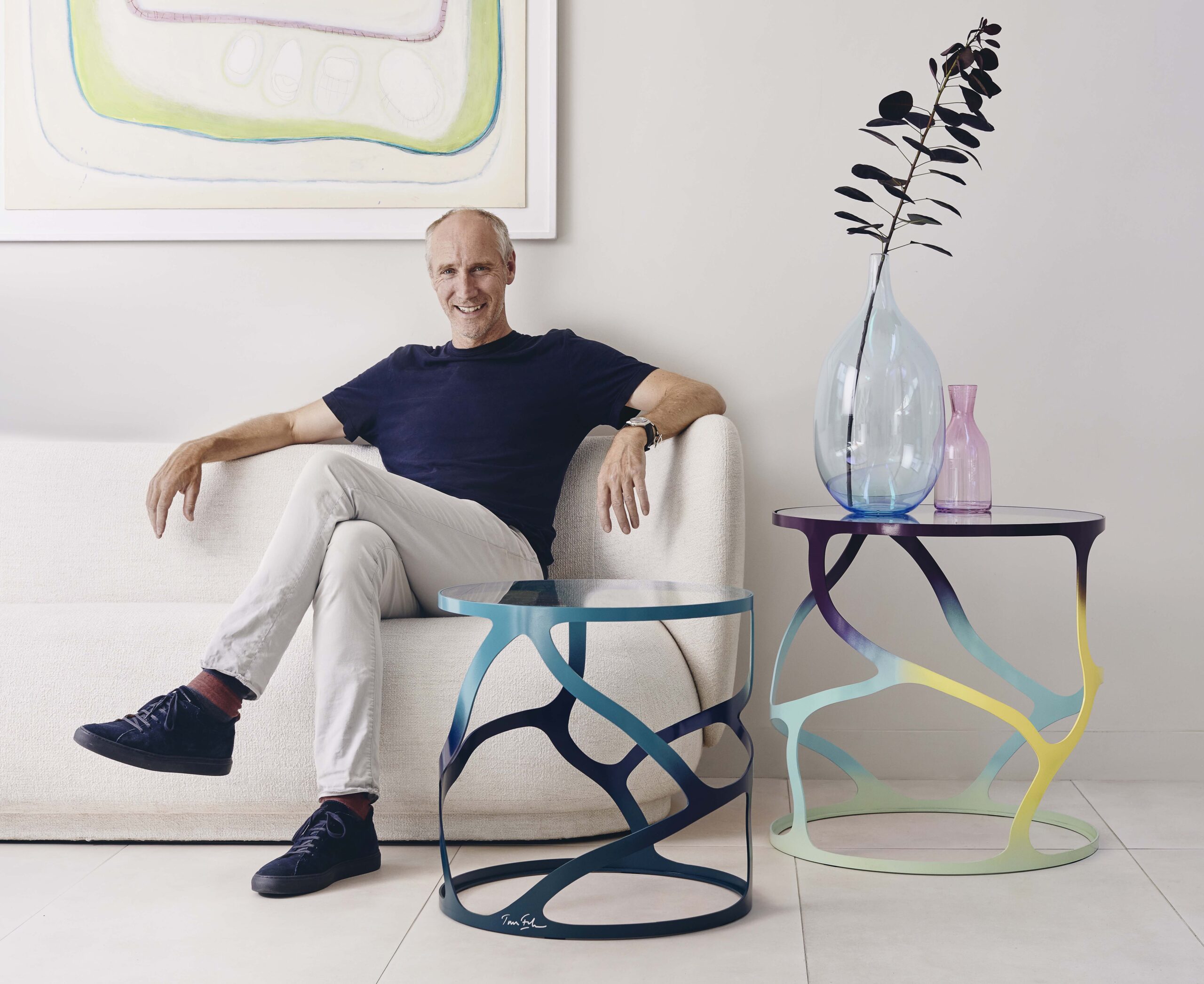Creative Confessions: Five Minutes with Mint Gallery
In this edition of Creative Confessions, we step into Lina Kanafani’s world to understand what drives her curatorial choices, how she identifies breakthrough talent, and why emotional resonance and risk are essential ingredients in the work she brings to the fore.
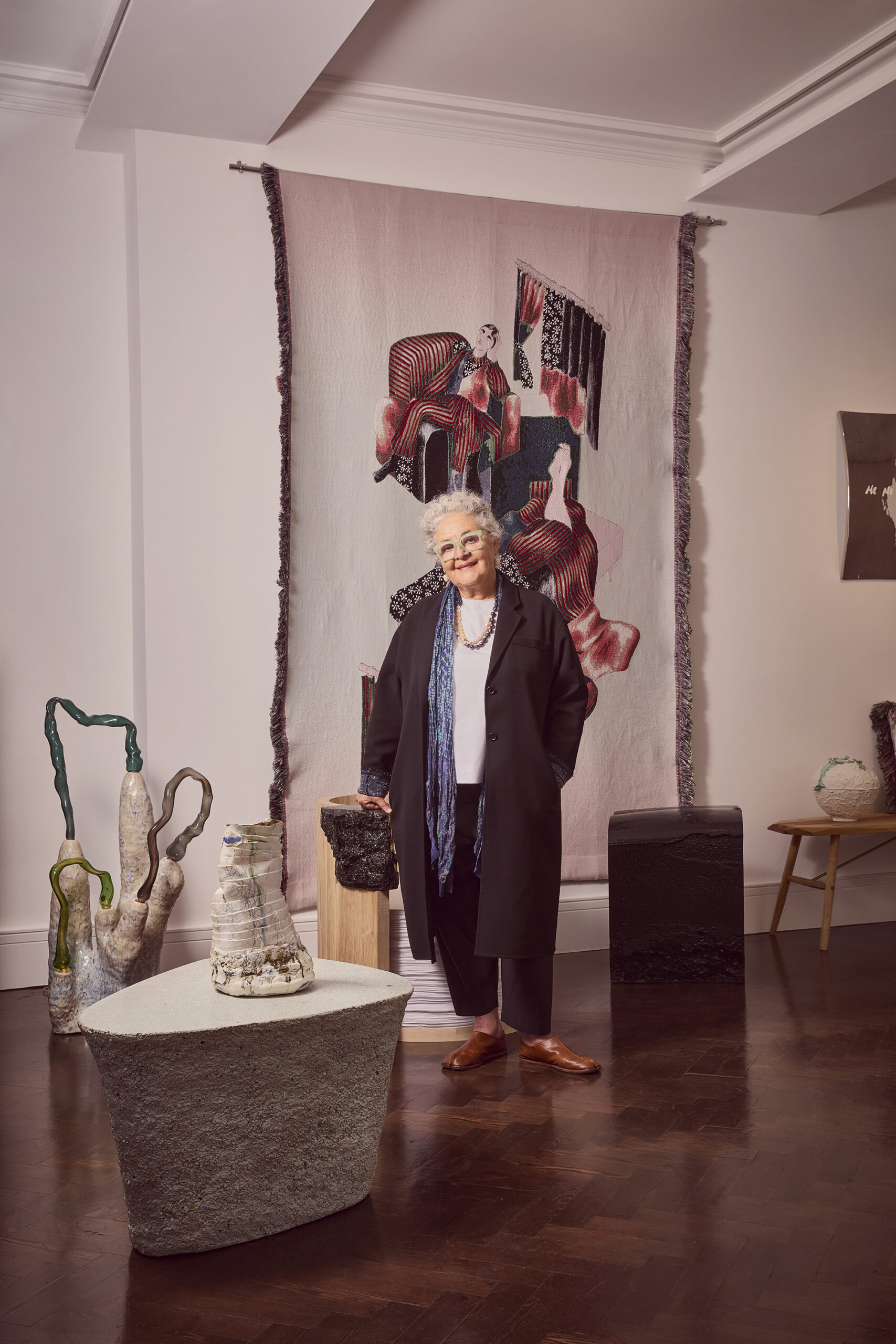
As the founder and curatorial mind behind Mint, Lina has spent over two decades championing avant-garde design and emerging voices. Her gallery has become a hub for discovery, known for its fearless blend of collectible pieces, limited editions, and conceptual craft. Lina’s approach is rooted in curiosity, cultural fluency, and an eye for the unexpected qualities that have made Mint a key destination during the London Design Festival and beyond.
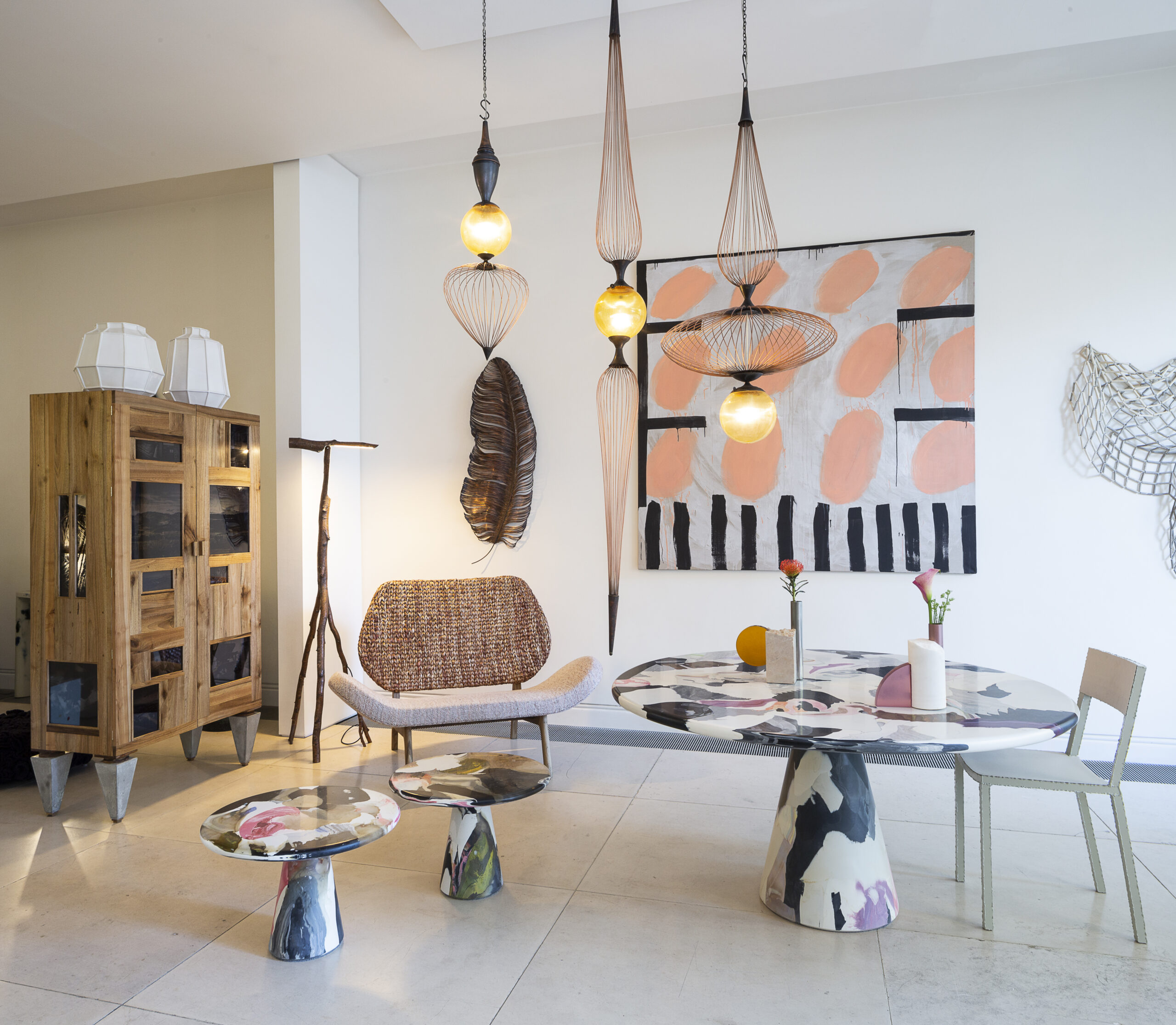
Curation by Lina, photography by Inge Clemente
YOU’VE BUILT A REPUTATION FOR SHOWCASING EXPERIMENTAL, BOUNDARY-PUSHING DESIGN. WHAT DRAWS YOU TO A PIECE OR A MAKER—WHAT MAKES YOU STOP AND LOOK TWICE?
My attraction is instinctive gained through years of experience. I have lived design all through my adult life, seeing thousands of works by established designers and new graduates. Over that time I have developed an eye to be attracted to ideas or concepts I have not experienced before. I can immediately recognise an interesting new concept when I see it and feel the excitement of that discovery.
MINT OFTEN HIGHLIGHTS WORK THAT BLURS THE LINE BETWEEN ART, DESIGN, AND CRAFT. HOW DO YOU DEFINE (OR RESIST DEFINING) WHAT BELONGS IN THE GALLERY?
I have always been attracted to craft in design and with time I realised many designs I select have an element of craft integral to their nature. I don’t take a view if a piece is art or design, instead I focus on the originality of the design and the making process. From experience, looking for new trends and being ahead of the curve will invariably lead to a blurring between design and art. I leave it to others to define the work, I purely base my choices on pieces that demonstrate an interesting approach to design and that are worth exhibiting.
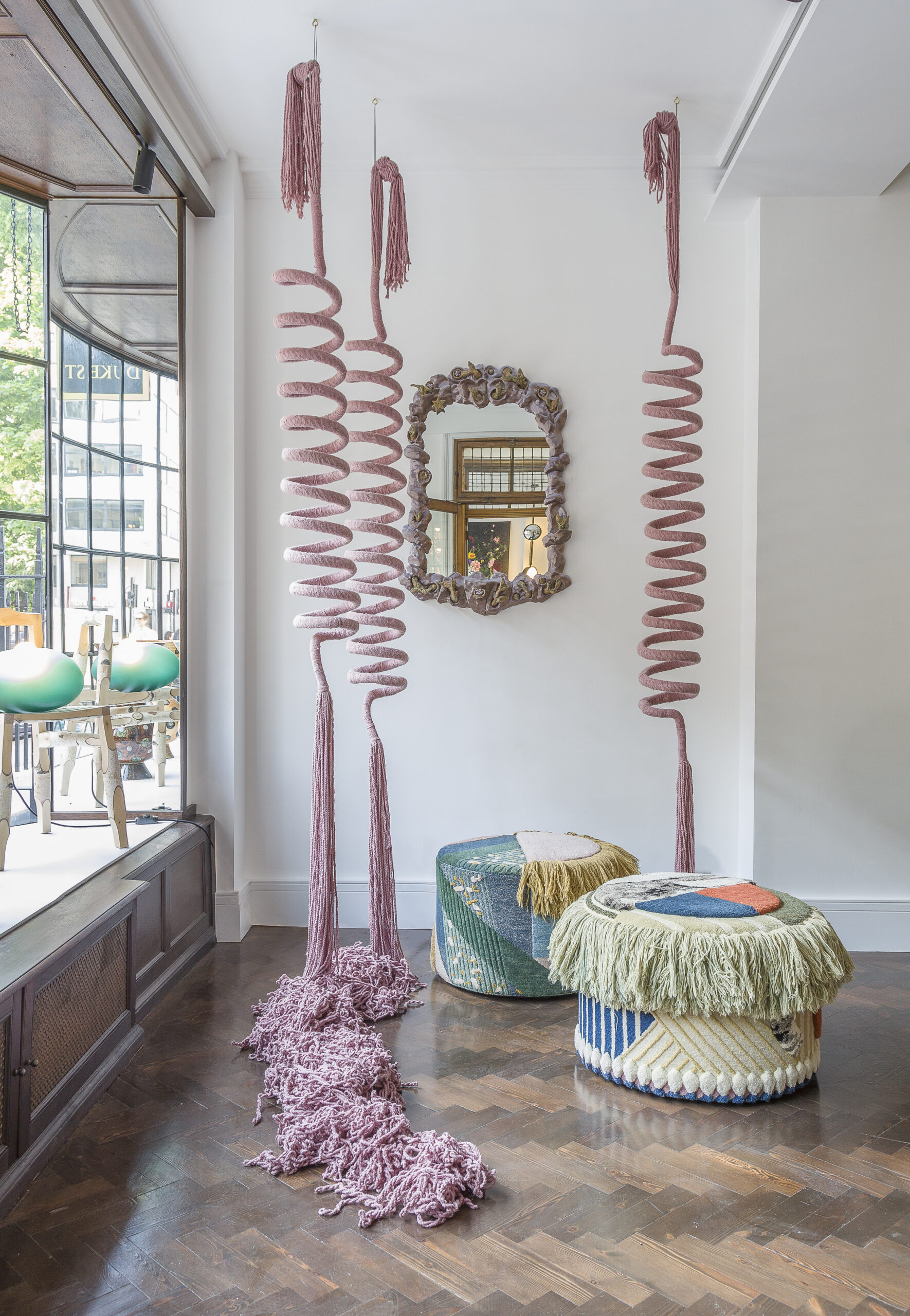
MINT Duke Street by Inge Clemente
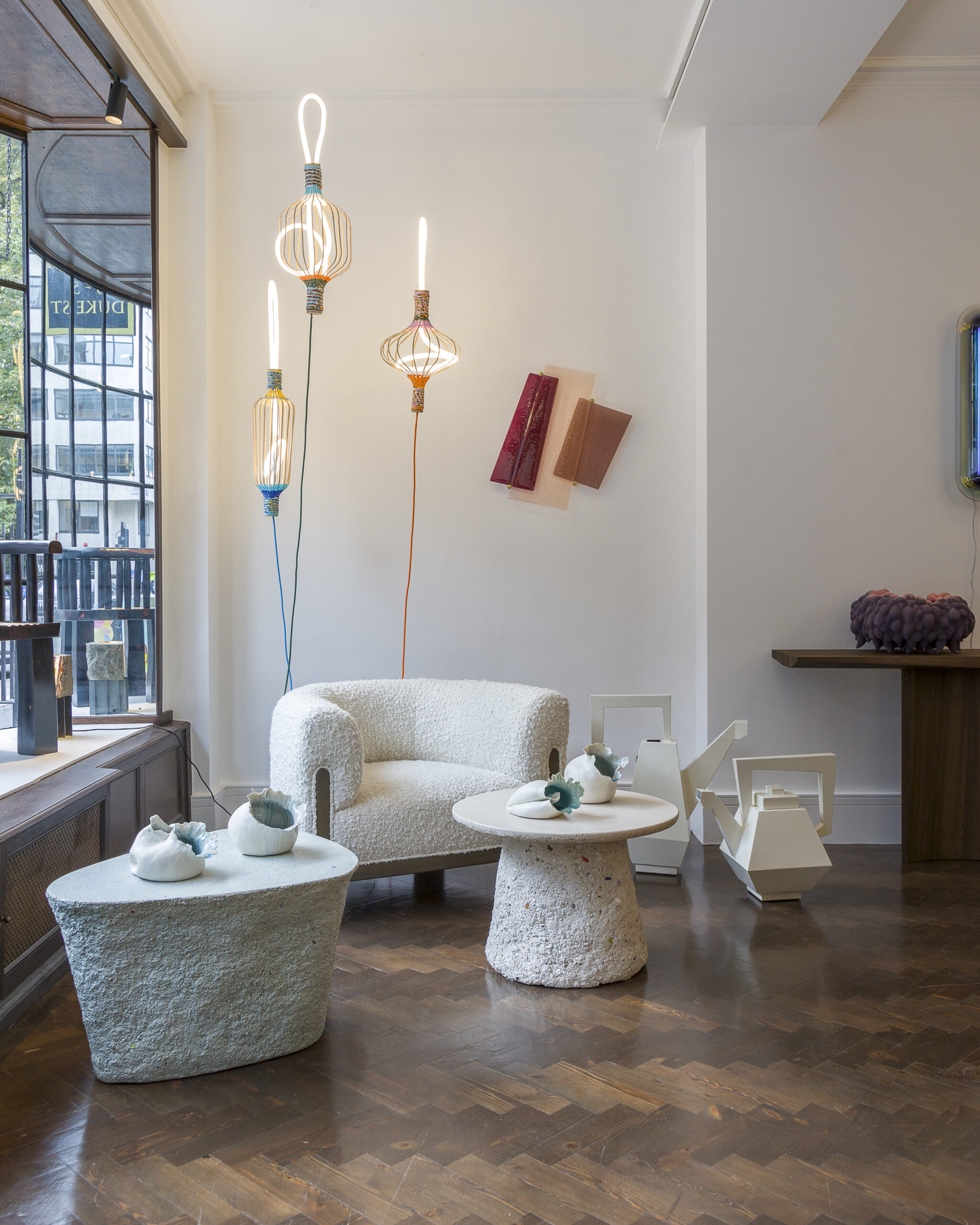
MINT composition featuring Max Lipsey Bodem tables by Inge Clemente
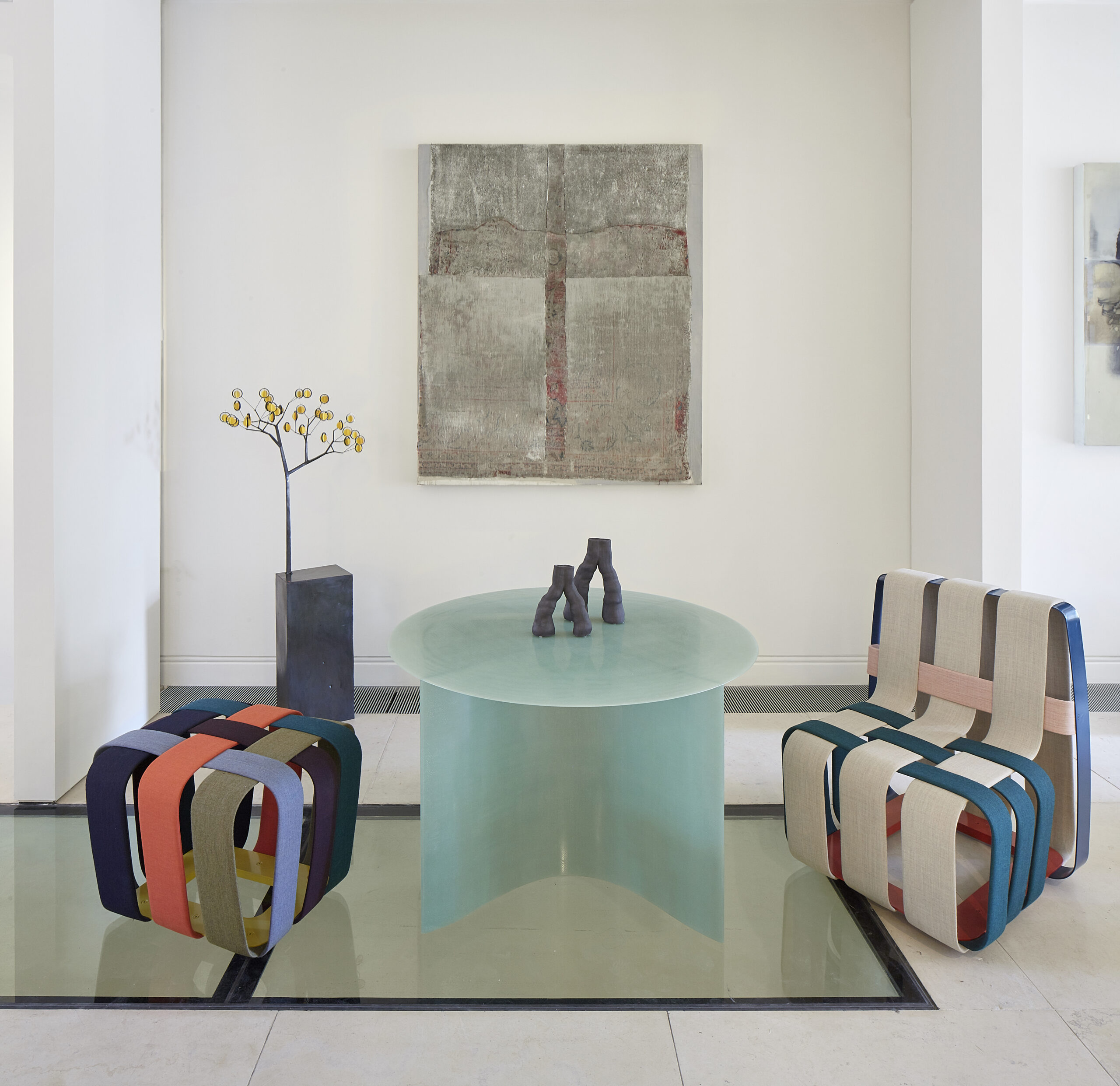
LDF 2020 featuring New Wave Table by Lukas Cober by Inge Clemente
YOUR CURATION OFTEN REFLECTS A DEEP NARRATIVE OR CULTURAL THREAD. HOW DO YOU APPROACH STORYTELLING THROUGH OBJECTS?
I love storytelling through design, it is my second nature as it speaks to the emotions and makes it easy to connect to. Although I tend to rely on finding a new trend in my quest for new design through viewing and research, once I select the collection for a show they invariably tie together like a story. I don’t plan how to curate a show it happens instinctively and organically.
WHAT ROLE DOES RISK PLAY IN YOUR CURATORIAL PROCESS? ARE THERE TIMES WHEN YOU’VE FOLLOWED YOUR INSTINCTS EVEN WHEN THE WORK CHALLENGED CONVENTION?
My approach is always to follow my instinct and I am nearly never on time with trends, but ahead of time, which is a big risk in itself. Putting together a collection of unfamiliar pieces by unknown designers, although I may consider them as great pieces, I never know how the public will react. In addition, the selected pieces tend to be complex and difficult to make, which is reflected in the price. Most people find this difficult to digest and although our shows continuously receive compliments, our best-selling pieces are mostly 3-5 years old. It takes long for the most to appreciate these designs and concepts, except for a few “avant-garde” collectors.
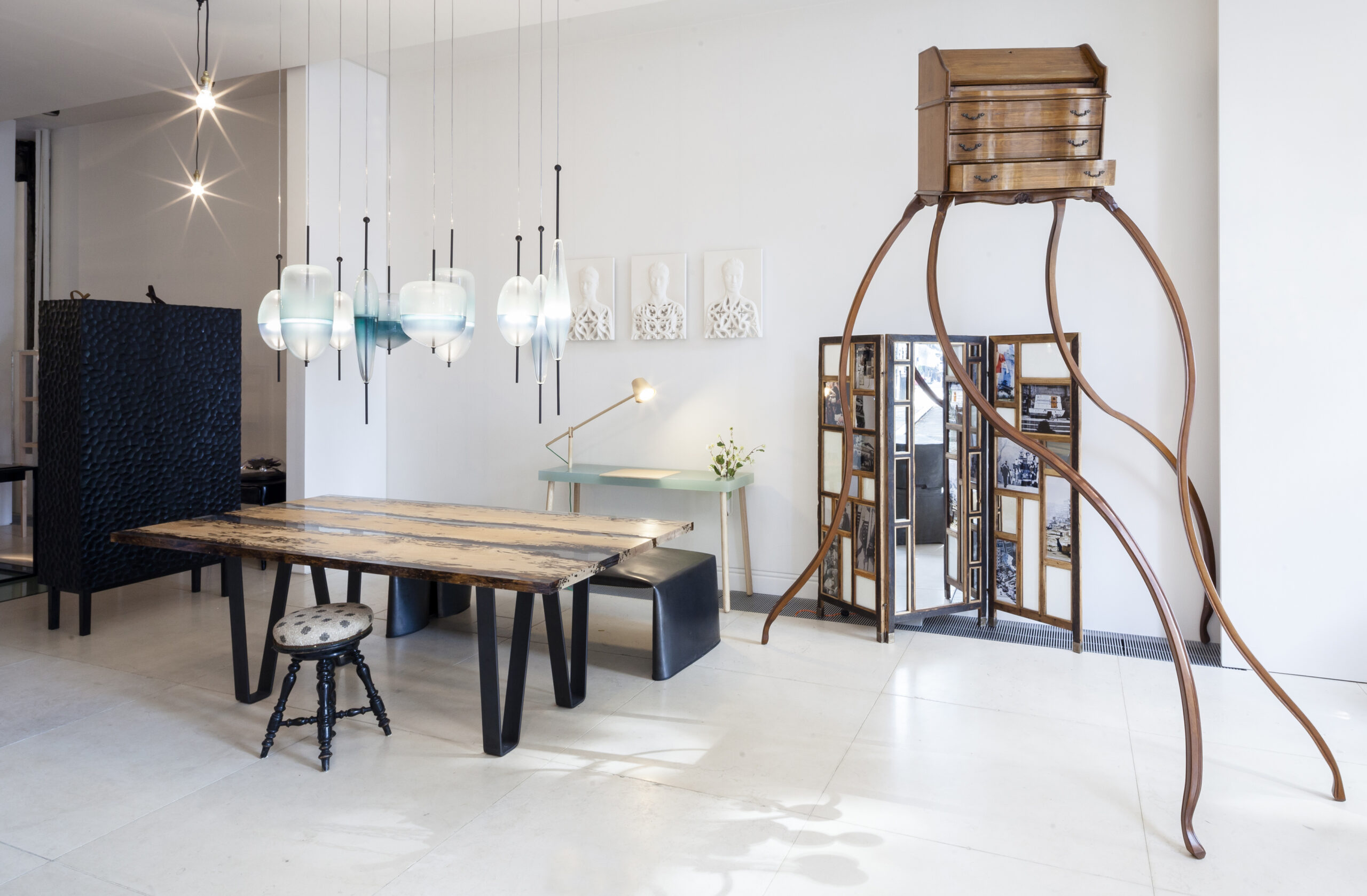
LDF 2013 by Inge Clemente

Lina in front of Loellmann 'm.&mme' Cabinet with door and vanity - spring 2013 by Inge Clemente
SUSTAINABILITY, MATERIAL INNOVATION, AND CULTURAL IDENTITY ALL FEATURE HEAVILY IN THE WORK YOU SHOW. ARE THESE CONSCIOUS CRITERIA OR NATURAL OUTCOMES OF THE VOICES YOU CHAMPION?
It is probably a combination of both. I am very aware of our finite resources and damage we as humans have caused to our unique planet. This drives me towards sustainable materials & innovative ideas to upcycle existing materials & by products. Equally, being non- English living here for 50 years my roots and travel experiences influence me heavily and I am drawn to cross cultural influences in design with craft being the main factor determining my choices.
HOW DO YOU DISCOVER NEW TALENT? IS IT INSTINCT, RESEARCH, OR CONVERSATION THAT LEADS YOU TO A NEW DESIGNER OR MAKER?
Discovering new talent is a process involving good research and knowledge, yet remains instinctive! I think it is acquired through experience and the joy of the process of discovery. I am very aware of current trends and tend to see numerous exhibitions but my adrenaline flows when I see an original piece and I still get excited. This follows talking to the designer to understand the concept, how the piece is made and going into depth discussing the design.
YOU WORK CLOSELY WITH DESIGNERS FROM ALL OVER THE WORLD. HOW DO CROSS-CULTURAL PERSPECTIVES SHAPE YOUR CURATORIAL LENS?
Indeed, mint is multinational, and I judge new work by its quality and originality rather than origin of the designer. Having said that designers are naturally influenced by their culture which often surfaces in their work making it more special and unique. New graduates are also influenced by their cross-cultural educational experiences depending on where they study, which weighs in on the interpretation of their work.
I am always surprised yet pleased to see all these various cross cultural influences gel well together in one show and speaking the same universal design language.
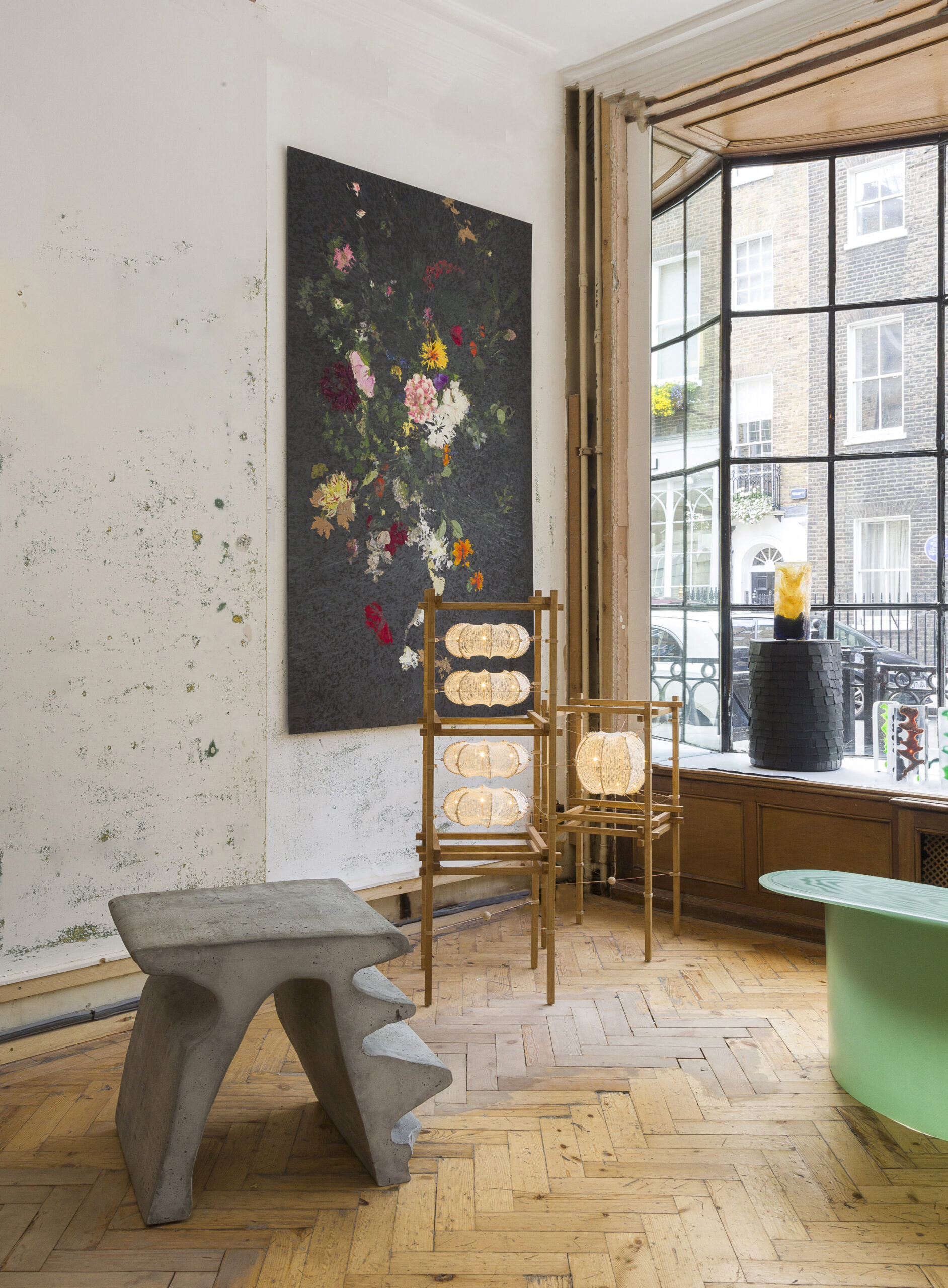
MINT by Inge Clemente
WHAT IS ONE PIECE OR DESIGNER YOU SHOWCASED EARLY THAT YOU'RE ESPECIALLY PROUD OF BRINGING INTO THE SPOTLIGHT?
My first show was for Maarten Baas in 2004 with Smoke, it is very special because it became iconic for that period and survived the test of time. In a way it started my journey with unique design and helped shape my direction in selecting new design as well as build valuable connections in the field.
WHAT ADVICE WOULD YOU GIVE TO A YOUNG DESIGNER HOPING TO BE EXHIBITED AT MINT?
They must be well prepared presenting their work with very clear photos and detailed descriptions, such as materials, dimensions etc.
A good idea is not enough, new work is judged through a combination of being an original design, its finishing and aesthetics. Designers should research if the approach is original or different enough to make it interesting and stand out. Pricing is also a very important factor to consider as most new designers tend to overprice their work out of the market.
FINALLY, IF YOU COULD ONLY KEEP ONE PIECE FROM ALL THE COLLECTIONS YOU’VE SHOWN—PURELY FOR YOURSELF—WHAT WOULD IT BE, AND WHY?
I have many favourites, one is the Clay Chairs by Maarten Baas. They are probably one of my earliest loves close to 20 years ago now, and looking at one now still makes me smile. I love the design, its silhouette, colours & mostly the humour, yet they are very solid and totally functional. I use it as my comfortable office chair. Maarten also has a very interesting story on how the Clay collection came to life!
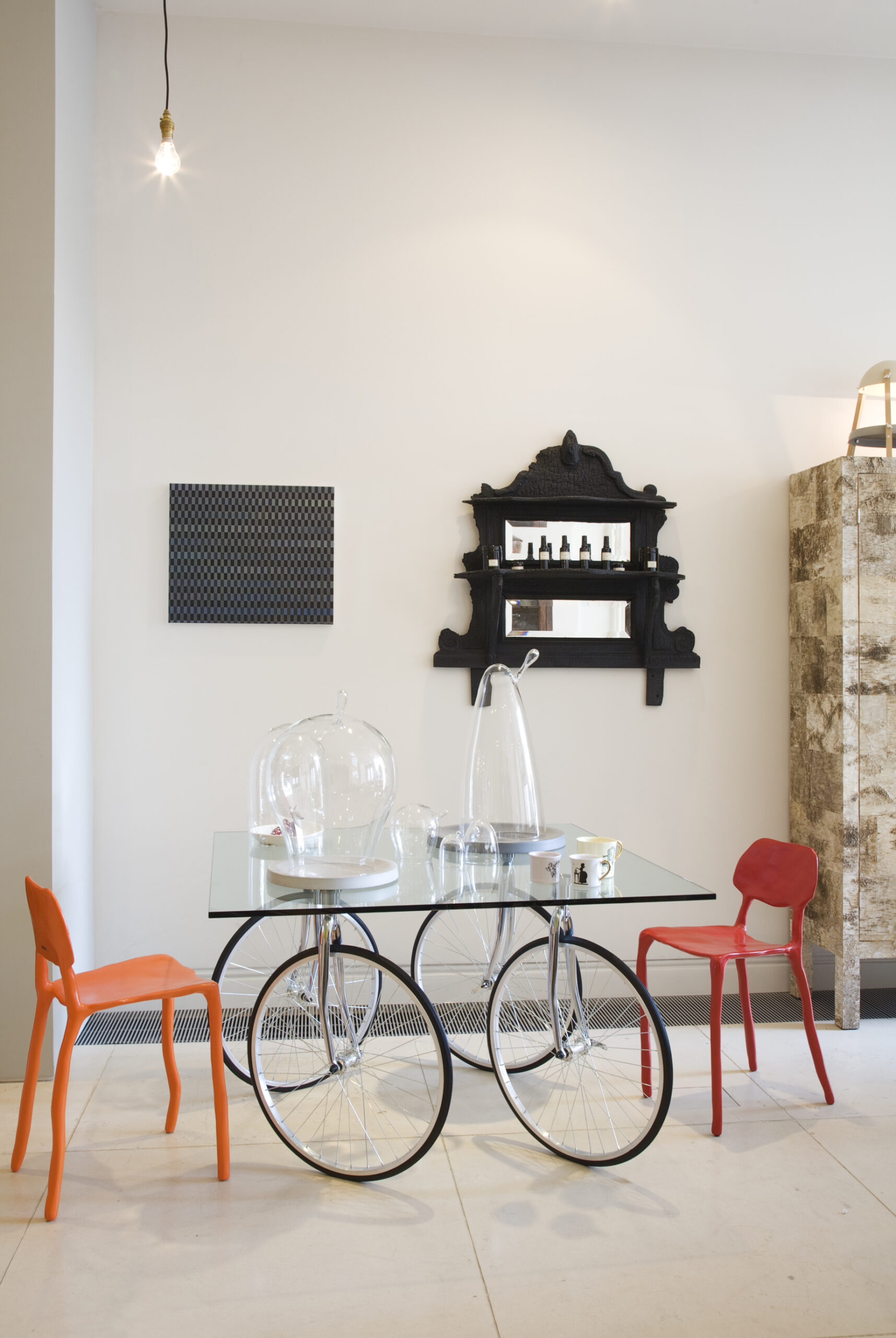
Featuring Clay Chairs by Maarten Maas by Inge Clemente

Featuring Smoke Mirror and Clay Bedside Table by Maarten Baas 2014 by Inge Clemente
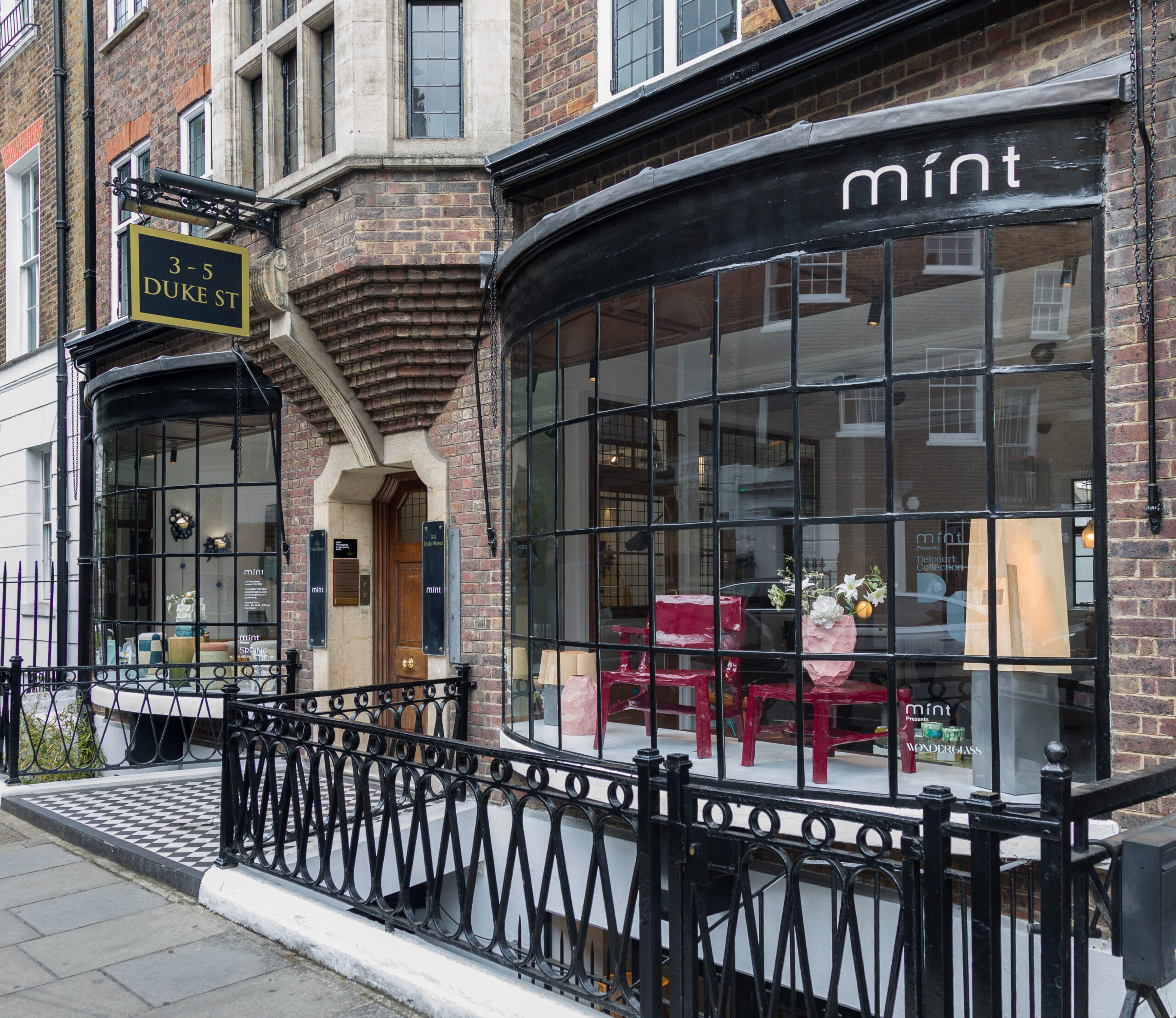
Mint LCW 2025 - 'Spring Tide' Exhibition - Duke Street by Inge Clemente


